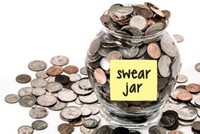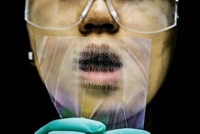Advertisement
Grab your lab coat. Let's get started
Welcome!
Welcome!
Create an account below to get 6 C&EN articles per month, receive newsletters and more - all free.
It seems this is your first time logging in online. Please enter the following information to continue.
As an ACS member you automatically get access to this site. All we need is few more details to create your reading experience.
Not you? Sign in with a different account.
Not you? Sign in with a different account.
ERROR 1
ERROR 1
ERROR 2
ERROR 2
ERROR 2
ERROR 2
ERROR 2
Password and Confirm password must match.
If you have an ACS member number, please enter it here so we can link this account to your membership. (optional)
ERROR 2
ACS values your privacy. By submitting your information, you are gaining access to C&EN and subscribing to our weekly newsletter. We use the information you provide to make your reading experience better, and we will never sell your data to third party members.
Analytical Chemistry
Cool Currency Facts
by Sophie L. Rovner
June 11, 2007
| A version of this story appeared in
Volume 85, Issue 24

Statistics
◾ The paper on which U.S. currency is printed contains about 75% cotton and 25% linen fibers, primarily drawn from textile industry waste.
◾ A U.S. banknote measures 2.61 by 6.14 inches, weighs 1 g, and costs 5.7 cents to produce.
◾ In fiscal 2006, the Treasury Department???s Bureau of Engraving & Printing (BEP) churned out some 8.2 billion banknotes worth about $130 billion. Roughly half were $1 notes.
◾ BEP reports that, on average, a $1 note lasts 21 months, while a $100 bill lasts 89 months.
Designs
◾ The current $1 and $2 banknote designs have changed little since they were introduced in 1929 and 1976, respectively. The $5, $10, $20, $50, and $100 notes were redesigned beginning in 1996. Additional security features were incorporated beginning in 2003. The redesigned $20 note introduced that year featured subtle background colors of green, peach, and blue&mdah;the first time that a modern bill included a color other than green and black. BEP will unveil a new $5 design early next year, followed by a new $100 design.
◾ The U.S. does not recall old banknotes when new designs are issued, though it withdraws notes with old designs when they circulate back to Federal Reserve banks. Notes worth more than $100 haven???t been printed for many years and are also being withdrawn from circulation.
History
◾ Early American colonists used English, Spanish, and French money. The U.S. didn't establish the dollar as the principal unit of currency until 1792.
◾ The origin of the "$" symbol is unclear, though the most widely accepted explanation is that it resulted from the merger of the letters in the Mexican or Spanish "P's" that represented pesos, piastres, or pieces of eight, BEP reports. The "$" symbol does not actually appear on U.S. currency.
◾ During the Civil War, one-third to one-half of the currency circulating in the U.S. was fake, says the U.S. Secret Service, which is responsible for fighting counterfeiting.
Bill Authenticity
◾ Currently, the most-counterfeited U.S. banknotes are the $100 note abroad and the $20 note domestically, according to "A Path to the Next Generation of U.S. Banknotes: Keeping Them Real," a report on counterfeiting recently published by the National Research Council (NRC).
◾ Plenty of devices can be used to check the authenticity of a banknote, but they don't all work well. In fact, the starch pen that store clerks sometimes use to test a bill is "a joke," according to Martin A. Crimp, a Michigan State University materials scientist who helped produce the NRC report. The pen marks a bill with a yellow streak of iodine. Iodine reacts with starch, which is found in wood-based paper but not in genuine currency paper. If the streak turns brown, it indicates the bill contains starch and is thus counterfeit. If the streak stays yellow, the bill is supposedly authentic. But the test provides a false sense of security, Crimp says: "It doesn't do any good if the counterfeiter was smart enough to use the right kind of paper that you can buy at Staples" and other office supply stores.
◾ Vending machines and other devices use a variety of reliable techniques to authenticate bills. Some are based on ink properties. The back of a genuine bill is printed with two different inks that appear the same color green in visible light, explains Dennis J. Trevor, who helped prepare the NRC report and is technical manager of the optical materials group at OFS Laboratories in Murray Hill, N.J. In infrared light, however, one of the inks is transparent and the other is opaque, and the appearance of the printed pattern changes. Thus, illumination with a simple IR diode can distinguish between genuine and fake notes. This behavior, in which two colors look alike in one wavelength of light but look different under another wavelength, is an example of metamerism.
Counterfeit Quality
◾ Counterfeit quality runs the gamut from totally convincing to laughable. At one extreme are the high-quality "supernotes" produced by government-sanctioned printers in countries such as North Korea. The supernotes reputedly generate $15 million to $25 million in annual profit for the North Korean government. Media reports indicate that recent U.S. efforts to stem the flow of counterfeit currency from North Korea destabilized the Asian nation's international banking relationships and brought negotiations over nuclear weapons to a standstill in February 2006. The U.S. has eased up on the counterfeiting front to encourage North Korea to resume nuclear negotiations.
◾ Most counterfeits aren't as convincing as the supernotes, however. "There was one counterfeit that we saw at the Secret Service that we wondered 'How could somebody have accepted this?' It was such an ugly, ink-jet-printed bill," Trevor says. "The Secret Service has even found single-sided bills that somebody had accepted."
Getting Away With It
Part of the reason that counterfeiters succeed is that "there's not a strong incentive for the average person to report a counterfeit note," Crimp says.
While serving on the NRC report committee, Alfred University biomaterials professor Alan H. Goldstein took an unofficial survey of shopkeepers and found that most of them had received counterfeits but few turned the fake bills over to the government. "If you're a merchant and someone gives you a counterfeit, it's only trouble for you," Goldstein explains. "If you confront the person who's giving you the counterfeit, they'll just say they got it from somebody else. On the other hand, if you call the Secret Service, they'll just take it away from you, and you don't get reimbursed. There's no upside. So people usually just give it back and tell the person to go away."
- Counterfeiting Countermeasures
- Chemistry could play a major role in future deterrents against currency fraud
- Fiscal Trivia
- Cool Currency Facts





Join the conversation
Contact the reporter
Submit a Letter to the Editor for publication
Engage with us on Twitter